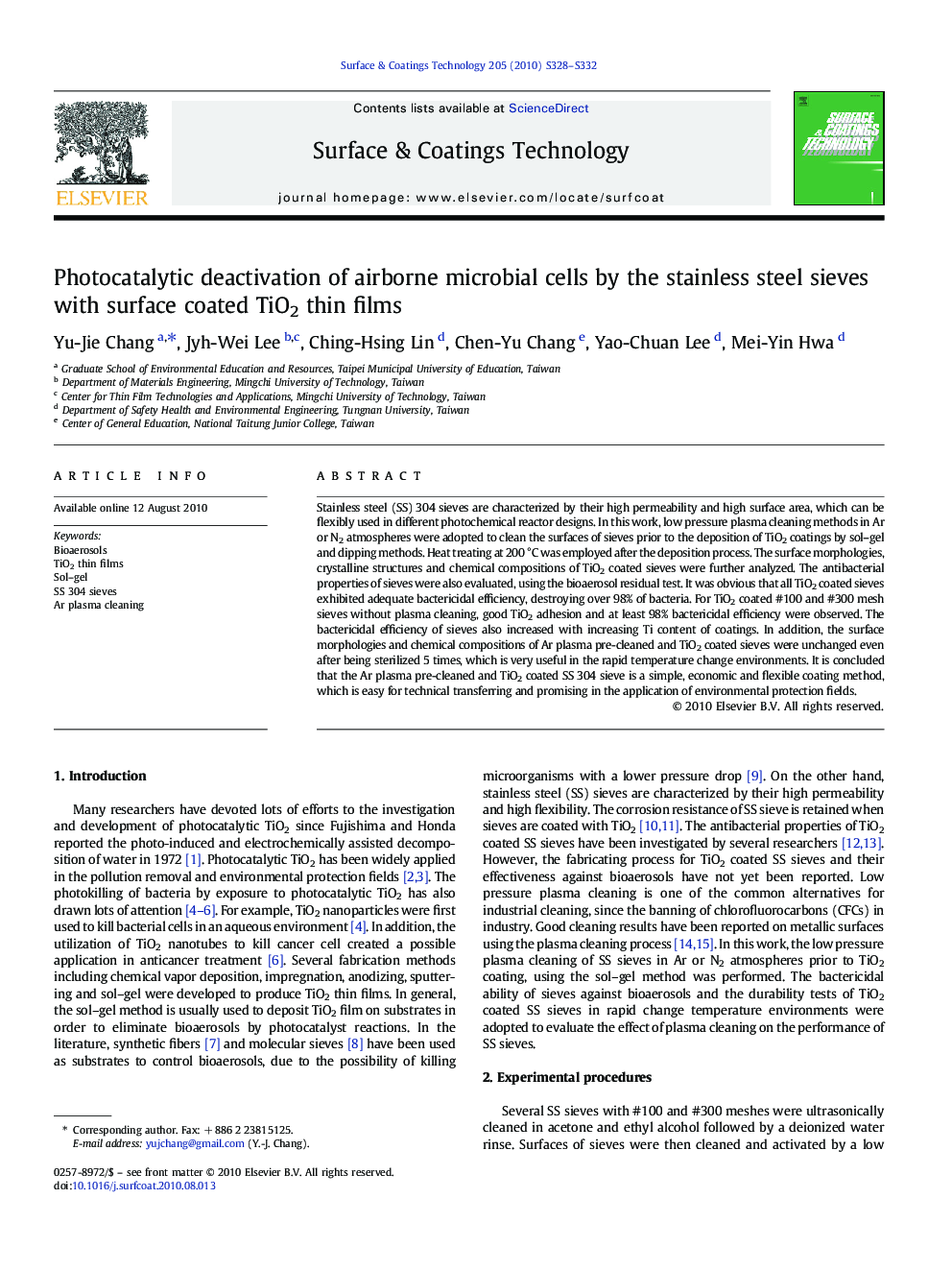| Article ID | Journal | Published Year | Pages | File Type |
|---|---|---|---|---|
| 1659691 | Surface and Coatings Technology | 2010 | 5 Pages |
Abstract
Stainless steel (SS) 304 sieves are characterized by their high permeability and high surface area, which can be flexibly used in different photochemical reactor designs. In this work, low pressure plasma cleaning methods in Ar or N2 atmospheres were adopted to clean the surfaces of sieves prior to the deposition of TiO2 coatings by sol-gel and dipping methods. Heat treating at 200 °C was employed after the deposition process. The surface morphologies, crystalline structures and chemical compositions of TiO2 coated sieves were further analyzed. The antibacterial properties of sieves were also evaluated, using the bioaerosol residual test. It was obvious that all TiO2 coated sieves exhibited adequate bactericidal efficiency, destroying over 98% of bacteria. For TiO2 coated #100 and #300 mesh sieves without plasma cleaning, good TiO2 adhesion and at least 98% bactericidal efficiency were observed. The bactericidal efficiency of sieves also increased with increasing Ti content of coatings. In addition, the surface morphologies and chemical compositions of Ar plasma pre-cleaned and TiO2 coated sieves were unchanged even after being sterilized 5 times, which is very useful in the rapid temperature change environments. It is concluded that the Ar plasma pre-cleaned and TiO2 coated SS 304 sieve is a simple, economic and flexible coating method, which is easy for technical transferring and promising in the application of environmental protection fields.
Keywords
Related Topics
Physical Sciences and Engineering
Materials Science
Nanotechnology
Authors
Yu-Jie Chang, Jyh-Wei Lee, Ching-Hsing Lin, Chen-Yu Chang, Yao-Chuan Lee, Mei-Yin Hwa,
